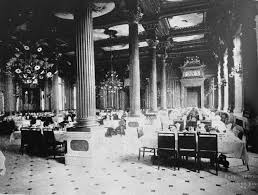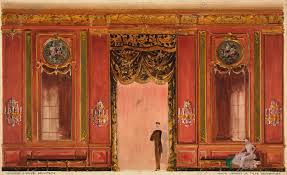| ENRIQUE VILA-MATAS | LA VIDA DE LOS OTROS | ||||||||||
|
|||||||||||
       |
ENRIQUE VILA-MATAS'S OLD MARRIED COUPLE TERRY (Vertigo / Web about Sebald). In the middle of Mac’s Problem, the recent novel by Enrique Vila Matas, Mac, our narrator, tells a story of two strangers getting drunk in a bar in Basel, Switzerland. One man tends to embellish every aspect of his story, the other sticks strictly to the facts. “Fiction and reality, an old married couple,” Mac remarks. At the end of the story, he tells us “fiction and reality fuse so intensely that, at certain moments, it seems impossible to separate them.” Like a torero and a bull, they “appear to be engage in a game of reciprocal influences.” I’ve noticed that these two sequences together form a very slight novelistic plot: as if, all of a sudden, certain autobiographical incidents had decided to piece together for me a single story, and one with literary overtones to boot; as if certain chapters of my daily life were colluding and crying out to be turned into fragments of a novel. The first few sentences of the Mac’s Problem tells you much about what you need to know about Mac: I’m fascinated by the current vogue for posthumous books, and I’m thinking of writing a fake one that could appear to be “posthumous” and “unfinished” when it would, in fact, be perfectly complete. Were I to die during the writing process, the book really would be my “final, interrupted work,” and that would, among other things, ruin my great dream of becoming a falsifier. Then again, a beginner must be prepared for anything, and I am just that, a debutant. My name is Mac. The key to untangling all of this comes when Mac explains his admiration for Georges Perec’s novel 53 Days. Perec died while writing this novel. In Mac’s explanation, “Perec’s novel was not prematurely interrupted by the author’s death, thus rendering it unfinished; instead, Perec had finished the novel some time prior to his death, but in order to be considered truly complete, it required a problem as momentous as death—which Perec had already incorporated into the text itself—even if, on the face of it, the book appeared interrupted and incomplete.” Yes, this is confusing, but then this is a novel by Enrique Vila-Matas, where even his explanations often demand further explanation.As a writer, Mac has a number of obsessions. First, he is obsessed with being a “falsifier.” Rather than being a “creative” writer, Mac’s strong suit is being a “modifier,” an editor. He wants to absorb what already exists and then alter that in some fashion rather than imagine something completely new. Second, Mac is also determined to write an interrupted or incomplete work. And here he thinks of an aphorism by Walter Benjamin: “What really matters is not the progression from one piece of knowledge to the next, but the leap or crack inherent in any one piece of knowledge.” Or, as Mac puts it, “That crack allows us [i.e. the viewer or reader] to add details of our own to the unfinished masterpiece. . . the hallmark of the incomplete artwork.” Third, Mac always wants to remain a beginning writer. Mac points to the example of the writer Bernard Malamud, “a good model for me” because he is “splendidly obstinate, always engaged in the struggle to go ever deeper into everything.” Mac wants to “make steady progress without becoming too successful” (his italics), and he quotes the Portuguese writer Fernando Pessoa: “I do not evolve: I travel.” Mac is a restless narrator, easily diverted from one train of thought to something entirely different. This is not stream of consciousness. This is narrative that purposefully lacks a center of gravity. Mac admires the artworks that “emerge” naturally (again, the italics are Vila-Matas’s), because “they are so close to what is actually happening.” By remaining “naive,” Mac thinks his own writing will also “emerge” naturally. This is partly why Mac wants to stay an amateur writer, a beginner, a naïf, and why he never wants his diary (this book) to become a novel. I understand this to mean that he doesn’t want it to become too “literary”. Every book by Vila-Matas is about writing and about literature itself and invokes a number of other writers. Mac’s Problem is no exception. In addition to those I’ve already mentioned, the list of writer’s name-dropped, if not briefly discussed, is long, and includes Nathalie Sarraute, Samuel Beckett, Nikolai Gogol, Alejandro Zambra, Isak Dinesen, Walter Benjamin, Thomas Bernhard, Marcel Schwob, Marguerite Duras, Ray Bradbury, Georges Perec, Alain Robbe-Grillet, David Markson, William Gaddis, and undoubtedly a number of others that I have forgotten. Mac would rather edit or rewrite existing texts than create his own. Nevertheless, he breaks this rule over and over. In the end, Mac heads off for North Africa alone, where he has what seems like an epiphany, or perhaps it’s just the latest of his many bright new ideas. Now I see that, in Barcelona, when I repeated the words over and over, what I was seeking was physical and mental exhaustion. In Barcelona, I was beginning the resemble the painter with the big bushy beard who my grandfather used to invite to spend the summers at our family’s vacation home in the country when I was a child. Over a period of three or four years, he painted the same tree more than one hundred times, perhaps because as happened with me and my writing he understood the appeal of constantly interrogating what he had already put down on paper. On a beach in southern Spain, en route to North Africa, Mac sits alone with his notebook, far from his study and his books, “feeling a joy that seems to be returning me to that pure substance of self, namely, a past impression, pure life preserved in its pure state.” After momentarily thinking about Marcel Proust, Mac recalls the day when he was five years old, in his grandmother’s house, “the first time I formed letters into words in my drawing book, the first time in my entire life that I wrote a story, my first contact with a written narrative, and, of course, with no study, no computer, no book to call my own.” For the moment at least, Mac has abandoned his Barcelona ways and continues to quietly explore memories of his past.Ultimately, the reader is left wondering if Mac speaks on behalf of Vila-Matas. Does Vila-Matas believe any of this stuff about writing that Mac spouts? Is Mac the avatar of Vila-Matas or is Vila-Matas making fun of Mac? Not surprisingly, I think it’s a bit of both. But Vila-Matas, I am sure, is more than happy that we have to puzzle this out on our own, without any help from him. As Mac declares near the end of Mac’s Problem, “I am one and many and I do not know who I am.” Mac, like most of Vila-Matas’s narrators, is annoying at times. He gets repetitive, he talks too much, he contradicts himself, he’s outrageous one moment and boring the next. When Mac decides to rewrite the story of the two men in the bar in Basel, he decides it should become “a comic piece of ‘written theater’.” One of the men would speak in a manner “all too comprehensible,” while the other would “make everything as infernally complicated as he could.” This is the yin and the yang of our world and Enrique Vila-Matas has encapsulated it perfectly for us in Mac’s Problem (New Directions, 2019, translated by Margaret Jull Costa and Sophie Hughes). February 17, 2021. |
||||||||||
|
|||||||||||
| www.enriquevilamatas.com | |||||||||||